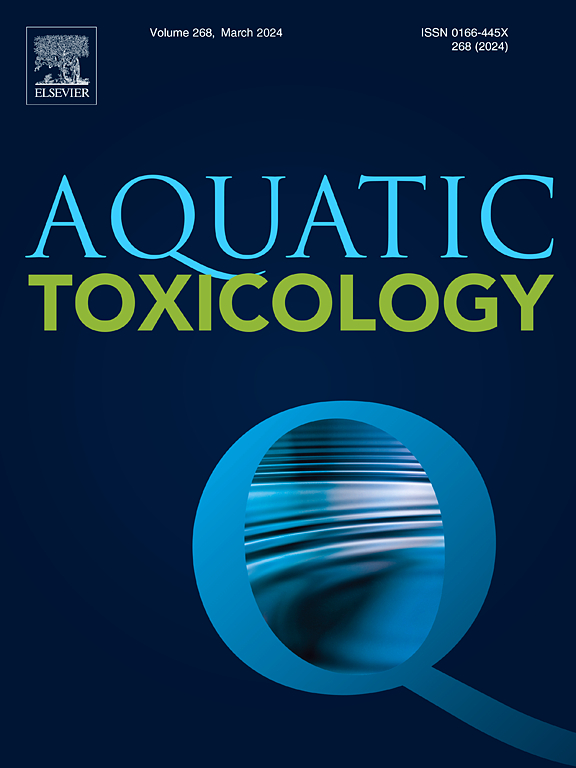Environmentally relevant concentrations lithium exposure induces neurotoxicity in yellowstripe goby (Mugilogobius chulae): Responses of BDNF/AKT/FoxOs in regulating glutamate excitotoxicity and mitochondrial function
IF 4.1
2区 环境科学与生态学
Q1 MARINE & FRESHWATER BIOLOGY
引用次数: 0
Abstract
The wide application of lithium in green energy and clinical psychiatry results in ubiquitous occurrence of lithium in aquatic environments. However, researches on the toxicity of lithium are largely confined to acute and/or high-dose scenarios, with insufficient data on its impacts on non-target organisms at environmental levels. The present study investigated the neurotoxicological effects of environmentally relevant concentrations of lithium exposure on yellowstripe goby (Mugilogobius chulae) and the related molecular response mechanisms. The results showed that lithium exposure significantly inhibited the expression of the target protein GSK-3β in the brain of M. chulae, and induced a series of harmful events including oxidative stress, glutamate accumulation, and even behavioral alteration. The organism mitigated the excitotoxic effects of glutamate accumulation by down-regulating ionotropic glutamate receptors. At the same time, the organism met the energy supply and alleviated oxidative stress by altering mitochondrial function. Notably, the stress regulators FoxOs and sestrins both modulated synaptic sensitivities to enhance the neural signaling and altered the energy metabolism pattern to alleviate energy crisis, all of which were important for maintaining neuronal survival and organismal homeostasis. In conclusion, lithium exposure induced glutamate excitability and led to a series of toxic events. Meanwhile, FoxOs played an important role in neural signaling and homeostatic regulation of energy metabolism in brain. This study furthered the comprehension of the neurotoxic impacts of lithium on aquatic organisms, elucidated the associated molecular mechanisms, and underscored the environmental risks posed by increasing lithium contamination.

求助全文
约1分钟内获得全文
求助全文
来源期刊

Aquatic Toxicology
环境科学-毒理学
CiteScore
7.10
自引率
4.40%
发文量
250
审稿时长
56 days
期刊介绍:
Aquatic Toxicology publishes significant contributions that increase the understanding of the impact of harmful substances (including natural and synthetic chemicals) on aquatic organisms and ecosystems.
Aquatic Toxicology considers both laboratory and field studies with a focus on marine/ freshwater environments. We strive to attract high quality original scientific papers, critical reviews and expert opinion papers in the following areas: Effects of harmful substances on molecular, cellular, sub-organismal, organismal, population, community, and ecosystem level; Toxic Mechanisms; Genetic disturbances, transgenerational effects, behavioral and adaptive responses; Impacts of harmful substances on structure, function of and services provided by aquatic ecosystems; Mixture toxicity assessment; Statistical approaches to predict exposure to and hazards of contaminants
The journal also considers manuscripts in other areas, such as the development of innovative concepts, approaches, and methodologies, which promote the wider application of toxicological datasets to the protection of aquatic environments and inform ecological risk assessments and decision making by relevant authorities.
 求助内容:
求助内容: 应助结果提醒方式:
应助结果提醒方式:


